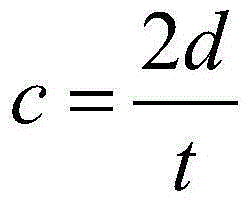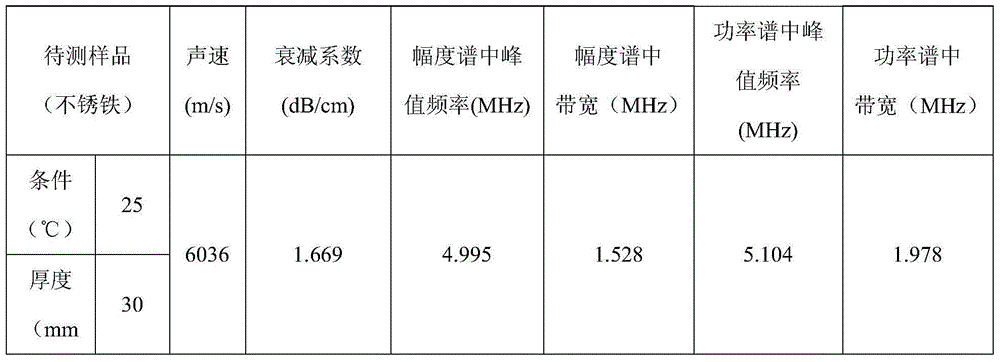A method for identifying the authenticity of metals using ultrasonic non-destructive detection
A non-destructive detection and metal technology, which is applied to the analysis of solids using sound waves/ultrasonic waves/infrasonic waves, etc., can solve problems such as complex chemical methods, damage to metal products, and complexity, and achieve the effects of simple identification methods, low cost, and accurate and reasonable identification results
- Summary
- Abstract
- Description
- Claims
- Application Information
AI Technical Summary
Problems solved by technology
Method used
Image
Examples
Embodiment 1
[0023] Taking stainless iron metal products as an example, the method of using ultrasonic non-destructive detection to identify the authenticity of metal consists of the following steps:
[0024] (1) Polish the upper and lower surfaces of the rectangular stainless iron reference sample with a thickness of 30 mm and rinse it with clean water.
[0025] (2) Fix the transceiver probe with a frequency of 5MHz on the upper surface of the above-mentioned stainless iron reference sample, transmit a pulse signal with a frequency of 5MHz and collect the bottom surface reflection signal of the stainless iron reference sample. This example uses a commercially available 5077PR The pulse transmitter receiver and Puyuan RIGOLDS1052E digital oscilloscope process the collected reflection signals and send them to the computer for further processing, and use conventional calculation methods to calculate the corresponding acoustic parameters of the stainless steel reference sample, namely sound ve...
Embodiment 2
[0042] In step (2) and step (3), a transceiver probe with a frequency of 2.5 MHz is used to collect the bottom surface reflection signals of the stainless iron reference sample and the sample to be tested, and the rest of the operations are the same as in embodiment 1.
[0043] Other steps are the same as in Example 1.
Embodiment 3
[0045] In step (2) and step (3), a transceiver probe with a frequency of 7.5 MHz is used to collect the bottom surface reflection signals of the stainless iron reference sample and the sample to be tested, and the rest of the operations are the same as in embodiment 1.
[0046] Other steps are the same as in Example 1.
PUM
 Login to View More
Login to View More Abstract
Description
Claims
Application Information
 Login to View More
Login to View More - R&D
- Intellectual Property
- Life Sciences
- Materials
- Tech Scout
- Unparalleled Data Quality
- Higher Quality Content
- 60% Fewer Hallucinations
Browse by: Latest US Patents, China's latest patents, Technical Efficacy Thesaurus, Application Domain, Technology Topic, Popular Technical Reports.
© 2025 PatSnap. All rights reserved.Legal|Privacy policy|Modern Slavery Act Transparency Statement|Sitemap|About US| Contact US: help@patsnap.com



